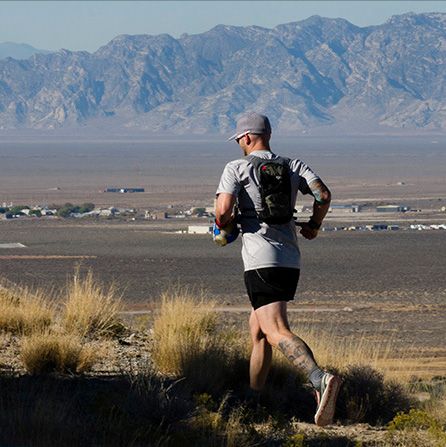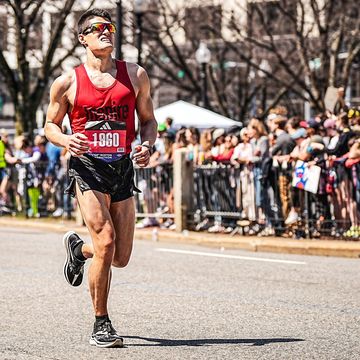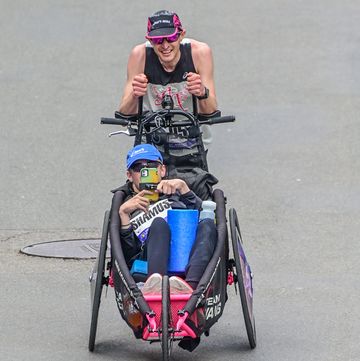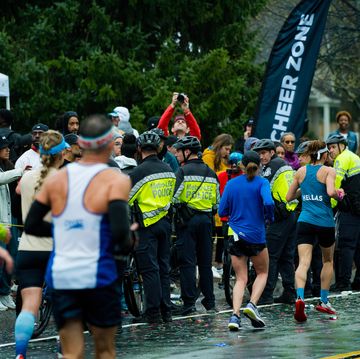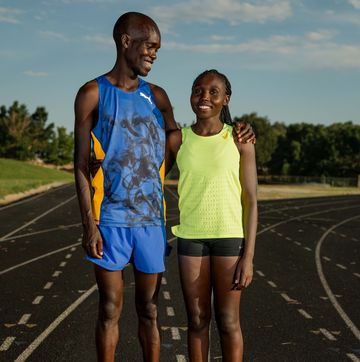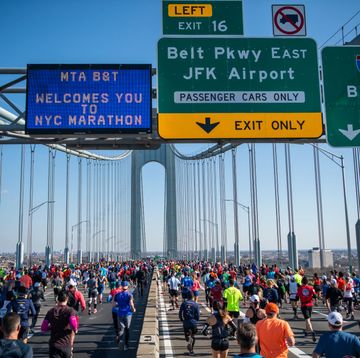Dugway Proving Ground, a U.S. Army test center for chemical and biological defense in the northwest Utah desert, is, as you might imagine, heavily secured. Its nickname, Area 52, comes from the belief of some conspiracy theorists that the government transferred covert operations to Dugway after Nevada’s Area 51 drew too much attention. Dugway is closed to the public every day of the year but one: the day of the Dugway Trail and Ultra Run. The 2016 edition takes place October 22.
The event offers multiple distances from 5K to 50K, as well as team competitions for civilians and military personnel. Last year, 88 runners participated.
On race day, runners traverse sagebrush flats and go up and over hillsides and along rocky, rugged ridges, primarily on singletrack trails. The 50K race gains about 6,000 feet in elevation; the 10K, almost 1,500 feet. And because the grounds cover almost 800,000 acres—approximately the size of Rhode Island—none of the routes go anywhere near where weapons are actually tested.
“Dugway, being a test and evaluation range, does conduct testing outdoors,” said Robert Saxon, Chief of Public Affairs at Dugway. “However, those tests are conducted out in the desert miles away from the location of the run.”
Background Checks, Waivers, and Searches
Judson Joyce, co-director of the event, said it was established in 2013, primarily for soldiers and their family members stationed at Dugway. Every civilian registrant must undergo an advance background check. Any adverse information that shows up, such as an outstanding arrest warrant or record of felony conviction, may disqualify a runner from participating.
“There have been hiccups,” said Joyce. “Last year, one person wasn’t allowed on.”
The race’s waiver is also unique: Runners must sign a form stating that they acknowledge the possibility of encountering military ordnance—weapons, combat vehicles, and other Army equipment—on or near the course.
“Rest assured, our safety personnel will have walked the ground and cleared the trails to ensure the event is safe for all participants,” Saxon said.
On race day, organizers recommend arriving earlier than normal to pass through a security check. Every runner must provide identification, and anyone driving in must also provide vehicle registration and insurance information. All who enter the grounds are subject to a search.
The routes are also secured to ensure runners don’t wander off-course—accidentally or intentionally—but Joyce declined to share specifics.
What It's Like to Run the Race
Although runners don’t see the farthest reaches of the massive test center, “you really feel isolated,” said Steve Frogley, winner of the 2015 Dugway 50K, “like you’re in the middle of nowhere.”
With no industrial sites or heavy traffic in the area, the air is definitely fresher than people are used to, according to Al Vogel, a public affairs specialist at Dugway. One runner told him that it was a stark contrast to running in the smog of her hometown, Los Angeles. And though weather can vary, the average race-day temperatures hover around 70 degrees.
Runners should be on the lookout for glimpses of wildlife that most people typically don’t get to see. Animals that call Dugway home include North America’s fastest land animal, the pronghorn antelope, as well as wild mustangs.
Despite the extra hassle associated with gaining entry to this event, Frogley said he would definitely consider running Dugway again.
“I’m not one that particularly runs the same race twice,” said Frogley, “but I would highly recommend it.”
